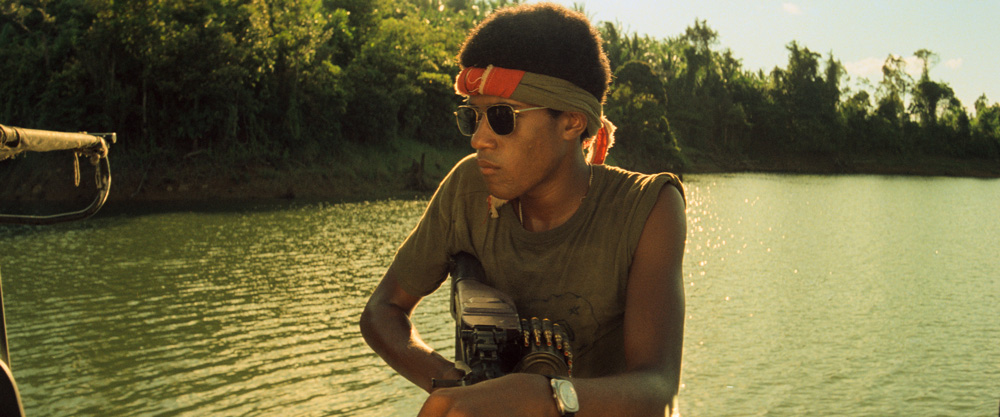
(c)2019 ZOETROPE CORP. ALL RIGHTS RESERVED.
“Apocalypse Now Final Cut” A magnificent epic depicting the chaos of the battlefield, a look behind the birth of the new version
2020.03.04
"Apocalypse Now" synopsis
At the end of the 1960s, as the Vietnam War intensifies, Captain Willard of the U.S. Army is ordered to carry out a special mission by the military's top brass. It was an order to assassinate Colonel Kurtz, who was building his own kingdom in the jungles of Cambodia, ignoring military regulations. Willard and four of his men sail up the Nun River in a patrol boat.
Index
- Coppola's war opera reborn
- Significant upgrades in picture and sound quality
- The successful transition to IMAX and George Lucas' version of Apocalypse Now
- Directed by Coppola, many different versions
Coppola's war opera reborn
Apocalypse Now Final Cut is the third version of Francis (Ford) Coppola's 1979 Vietnam War film Apocalypse Now Now. The second was in 2001 with the 202-minute Apocalypse Now special edition, which was 49 minutes longer than the original theatrical release [Note 0] due to the director restoring many of the cut scenes and rearranging the scenes. (hereinafter referred to as the ``Special Complete Edition'') has been completed.
This ``Final Cut'' has been re-edited based on that, and has a running time of 182 minutes, a slimmer version of the ``Special Complete Edition.'' Specifically, for example, a long sequence in which Captain Willard (Martin Sheen) and his friends demand individual play from a playmate team stranded in a hurricane in exchange for fuel has been cut out, and there are also scenes like Colonel Kurtz ( Similar measures are taken in the scene in which Marlon Brando reads out a report on the Vietnam War from Time magazine to Willard, who has been released. In addition, the French colonist sequence, which was greatly expanded in the ``Special Complete Edition,'' has been condensed and is physically about 20 minutes shorter than the same version.
"Apocalypse Now" preview
In response to the review of these scenes, Coppola wrote in an interview with Vanity Fair (*1) that ``(the Playmate scenes) do not belong to the subject matter, and TIME magazine was once an important news organization.'' However, it is not in keeping with the times,'' and says that these depictions are not appropriate in modern times.
Above all, John Milius, who wrote the screenplay based on Conrad's ``Heart of Darkness,'' likens Willard's journey on a patrol boat to Homer's ``Odyssey,'' in which the playmates sing beautifully and wreck the ship. It is said that she was the equivalent of the sea Monster siren. For this reason, he explained to Coppola the contradiction of the patrol boat team coming into contact with the girls (*2), and this may be linked to the deletion of that part.

“Apocalypse Now” (c)2019 ZOETROPE CORP. ALL RIGHTS RESERVED.
In addition, Walter Murch, who was in charge of editing the scenes with the French colonists, said in a dialogue note (*3), ``It is a scene that cannot be accommodated both physically and chronologically, but without the scene, there would have been a scene where the French colonists would have died in a gunfight.'' (Laurence Fishburne)'s whereabouts will be unknown.''This is evidence that the solution to this dilemma was to make the film more compact, but to preserve the scene itself.

